Known as the Tombs of the Kings, this necropolis lies close to the Roman Mosaics at Paphos. Unlike its name suggests, the site is thought to have been the place of burial for aristocrats and high officials. The tombs are cut into the native rock and date back to the 4th century BC. The site is organized for visitors to walk from one tomb to the next in a sequential order.
Tomb One is a semi-subterranean chamber tomb accessible via 11 modern steps. Inside are remnants of plaster and a depression in the rock that likely was where a clay water pipe lay for funerary libations, a tradition dating back to the Roman period. There is no way to date this tomb, partly due to looting in the past.
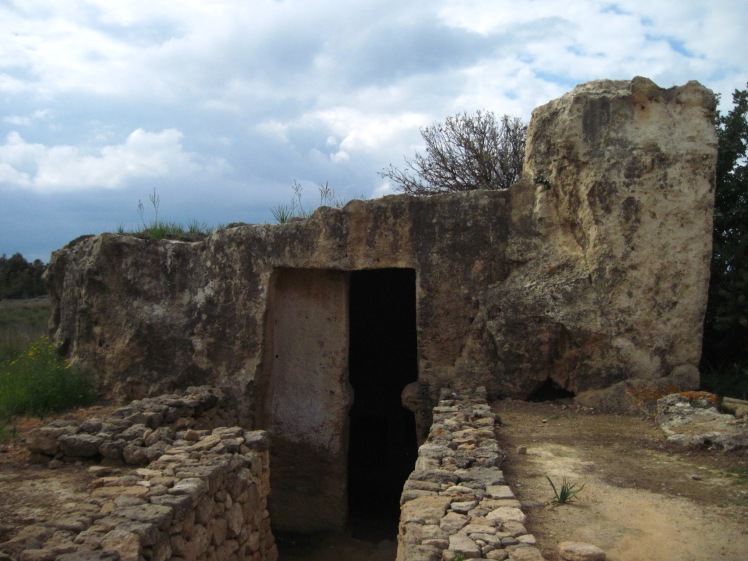
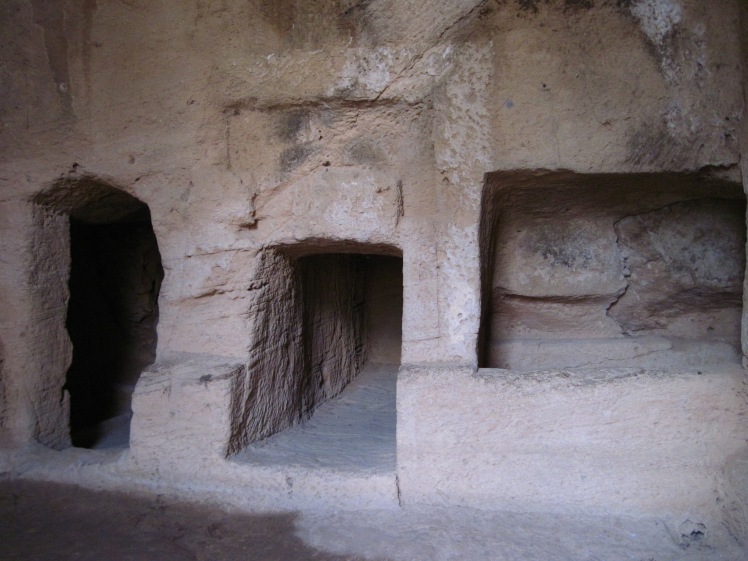
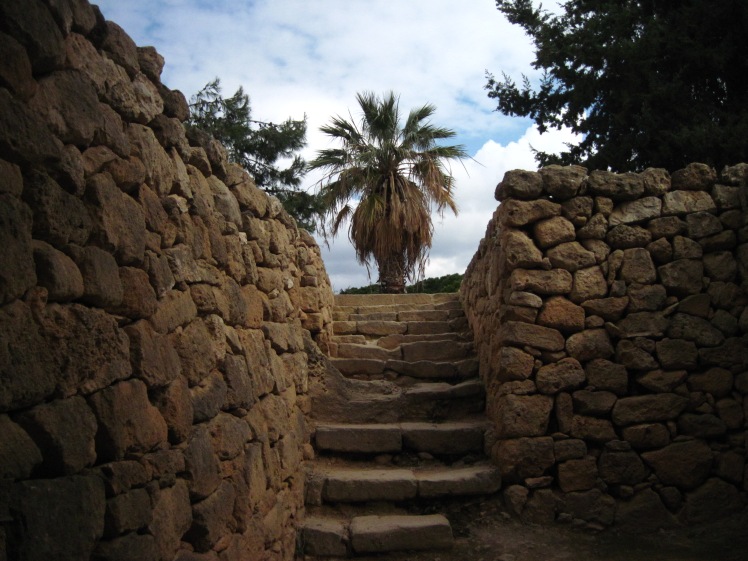
Sometimes it could be hard to differentiate between a tomb and the natural rock formations.
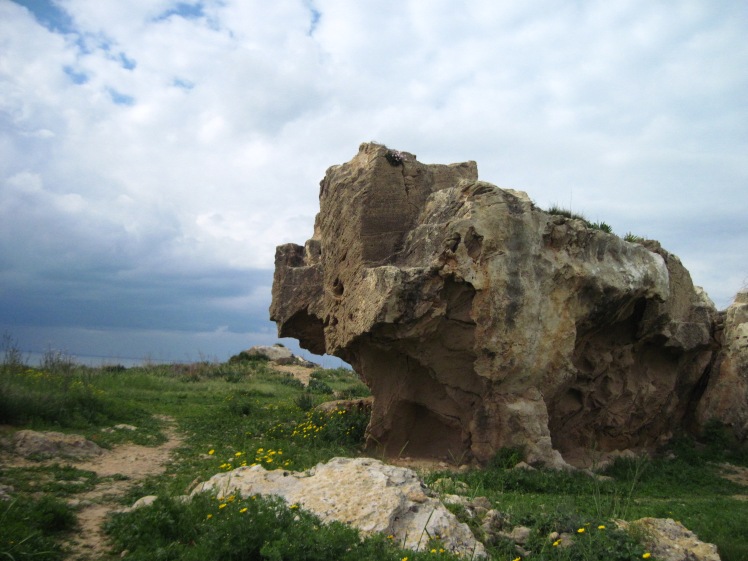
The next section of the site we came across was a rocky hill, known as the Tumulus, which was divided into various burial enclosures. Three chamber tombs were excavated here and all date to the Hellenistic period.
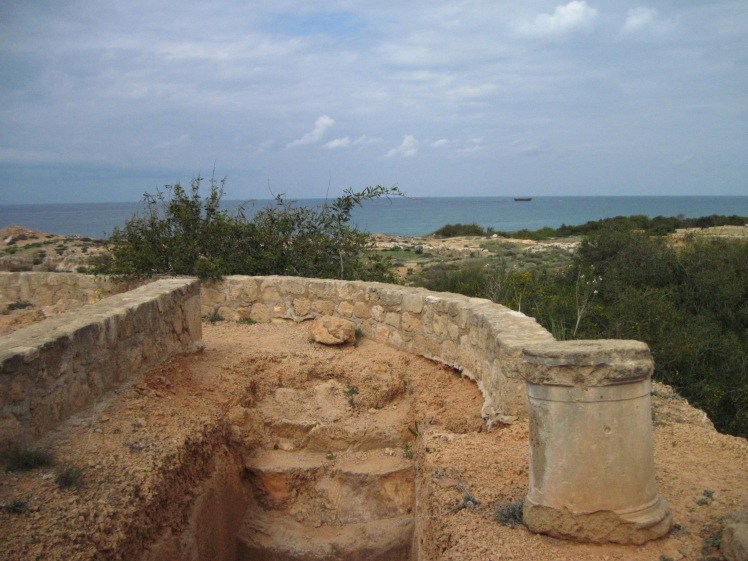
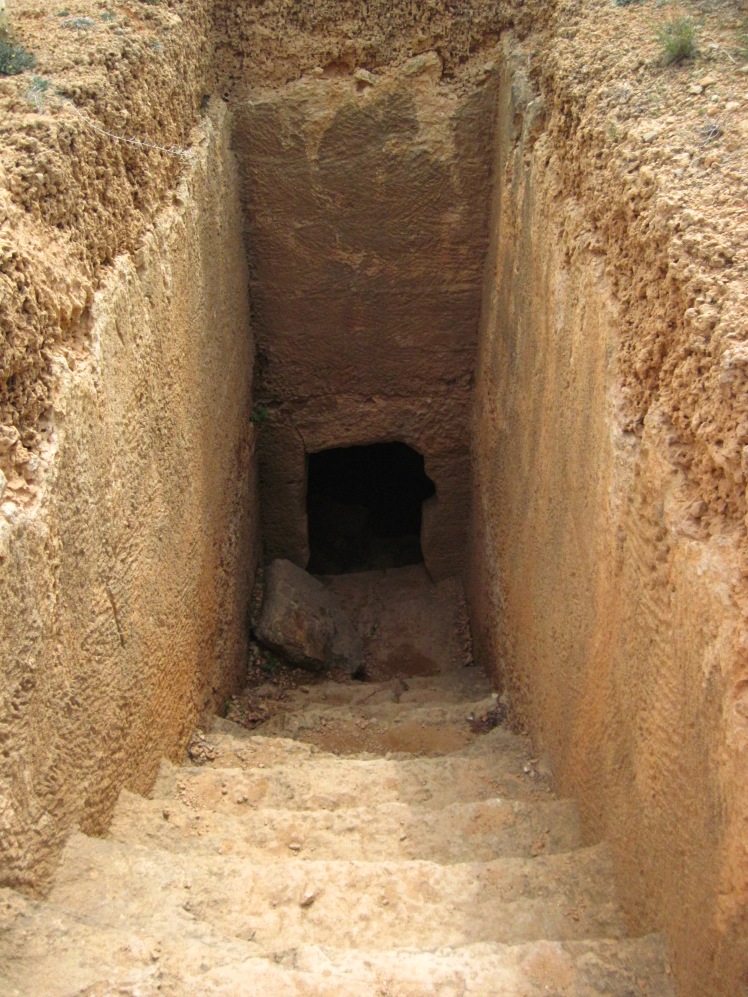
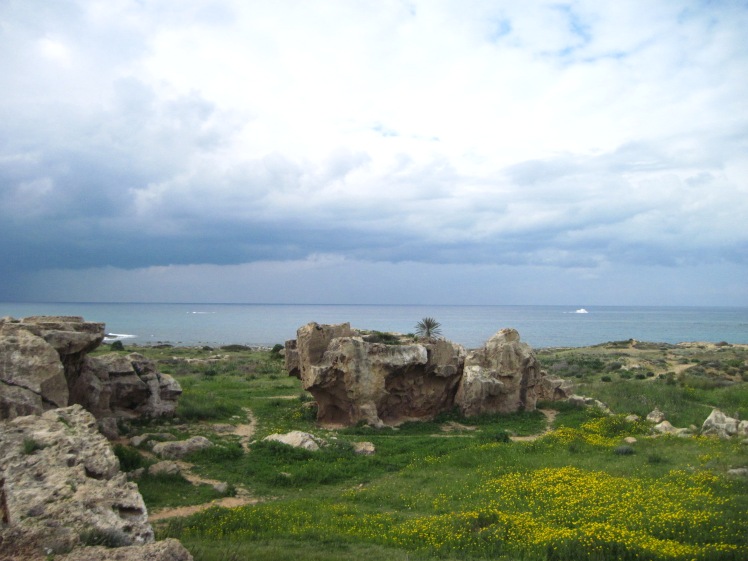
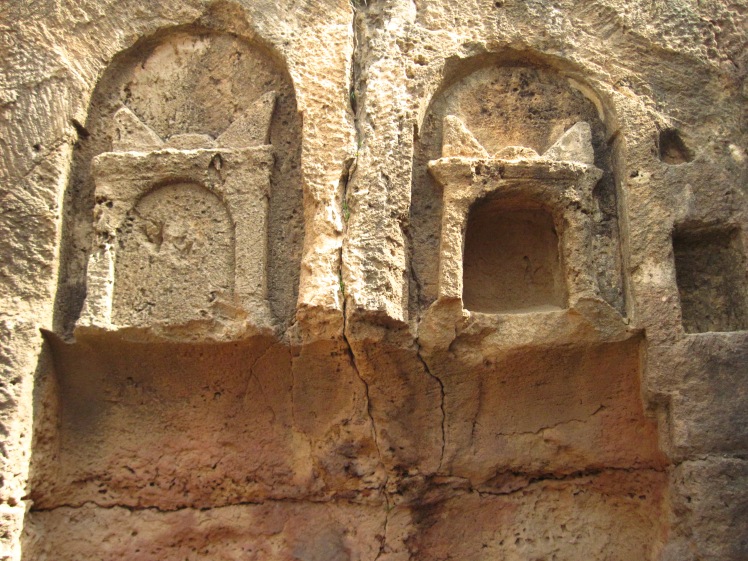
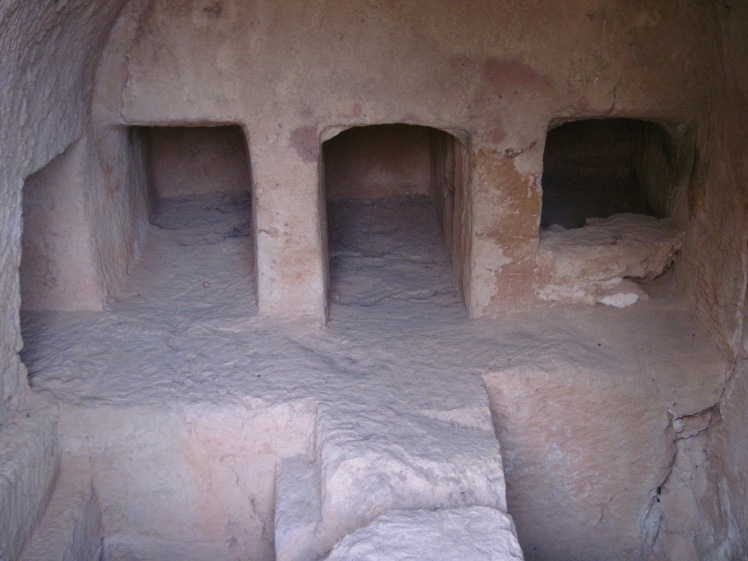
At times we strayed off the path, unsure what exactly we were seeing.
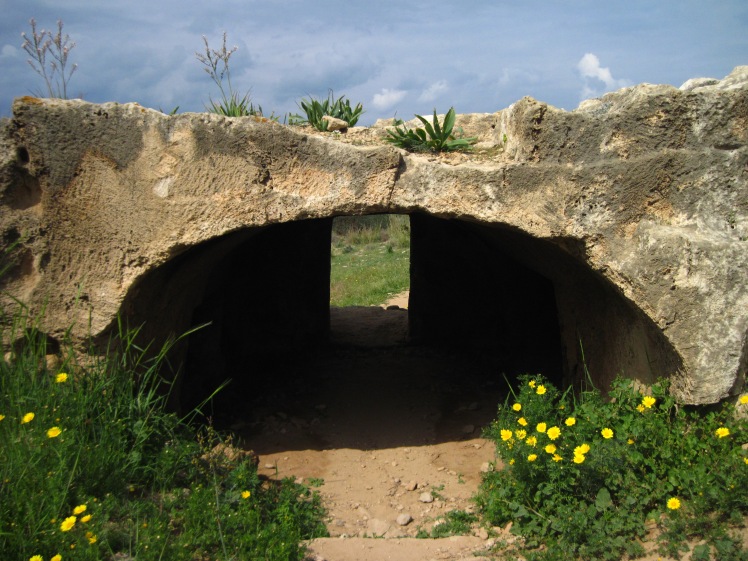
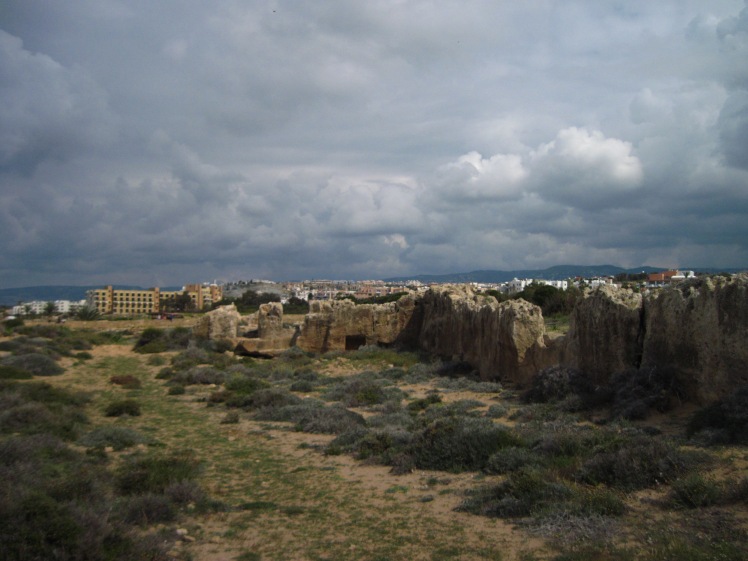
We also found a few more recent man-made structures in the area.
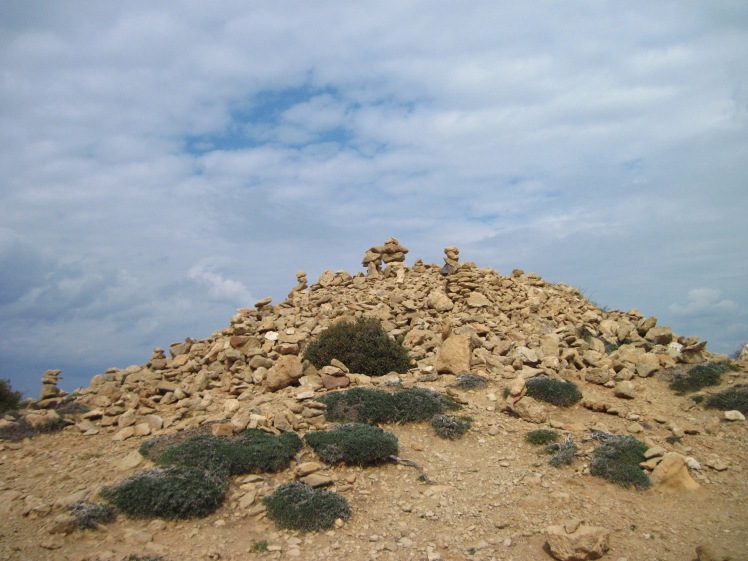
Tomb Two dates back, again, to the Hellenistic period. Multiple chambers were carved into the lime-stone in addition to a well, atrium, and two small altars.
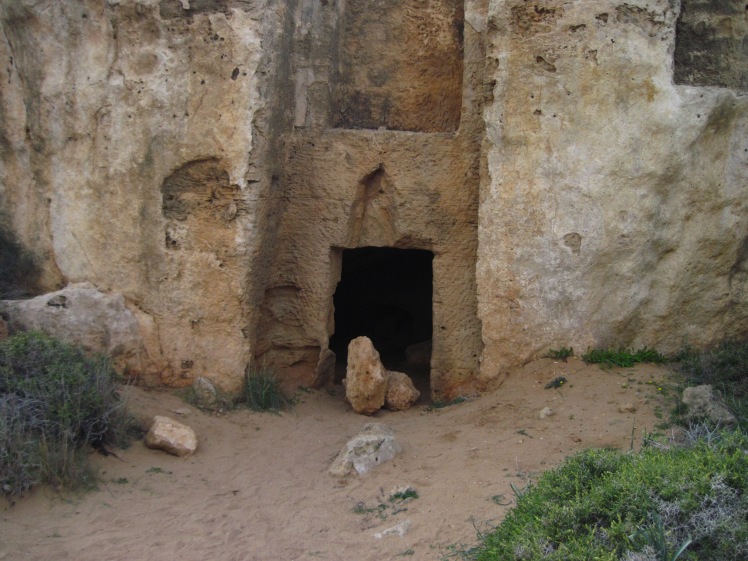
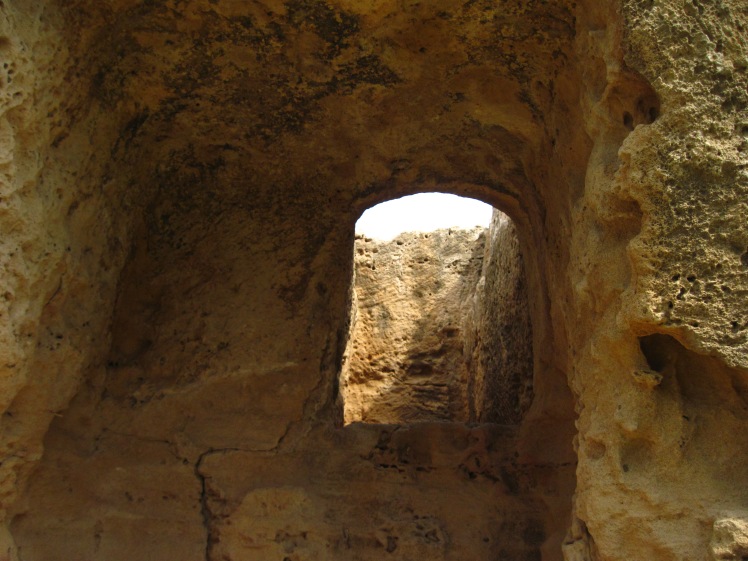
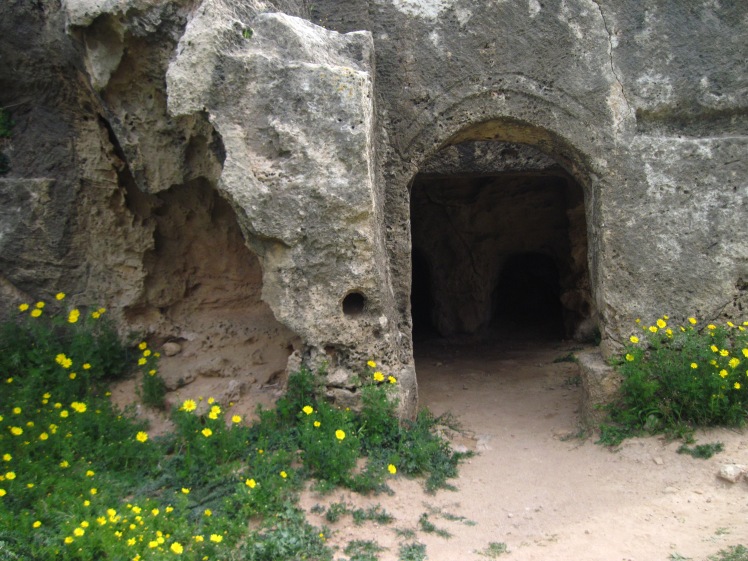
At this point, a storm that had been brewing out at sea finally blew in and it began to rain. The majority of the tourists took refuge inside the tombs, hoping the rain would soon pass. We did this at first, though soon gave up on the false expectation and viewed the rest of the site cold and wet.
Tomb Three was a complex consisting of two tombs. Each had Doric columns supporting the roofs in addition to burial chambers and water wells. An opening in one of the corners was made by looters and leads to another tomb.
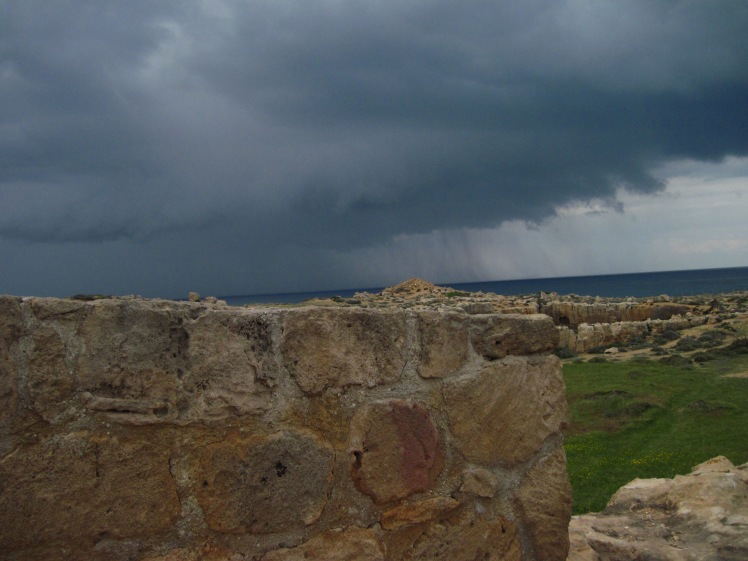
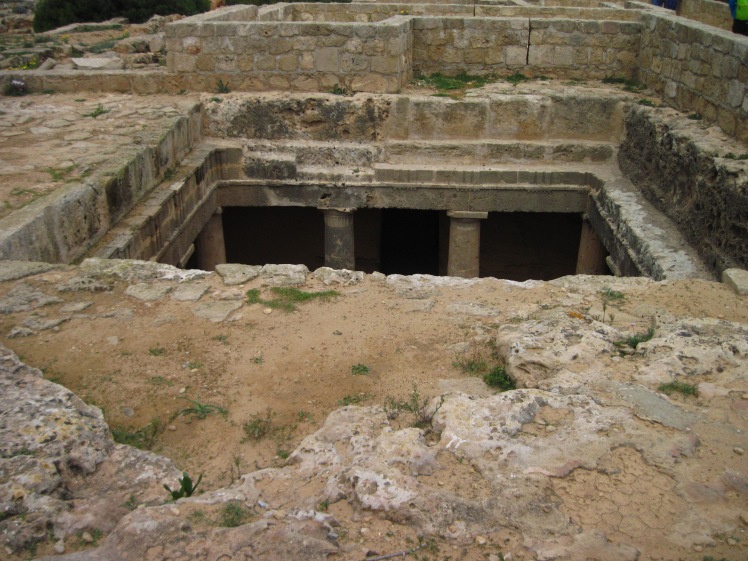
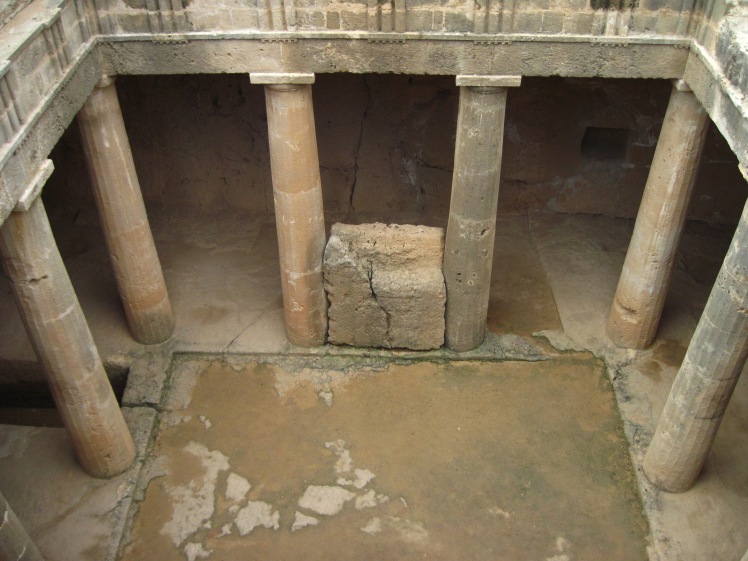
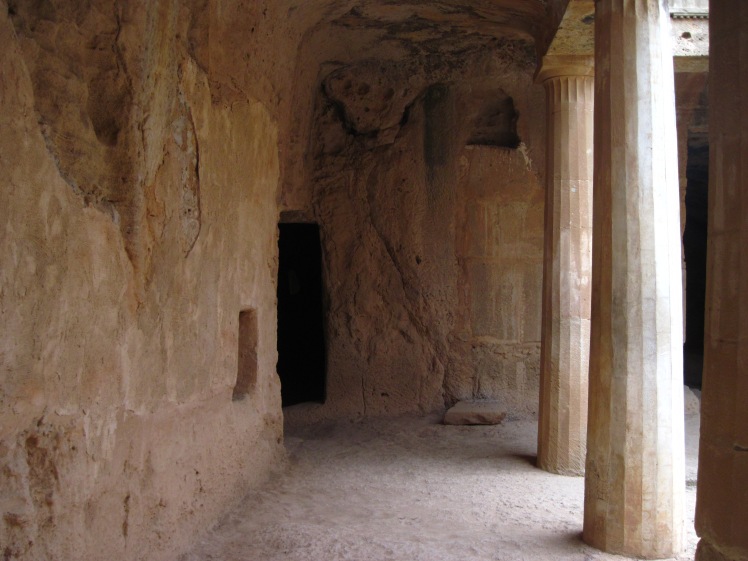
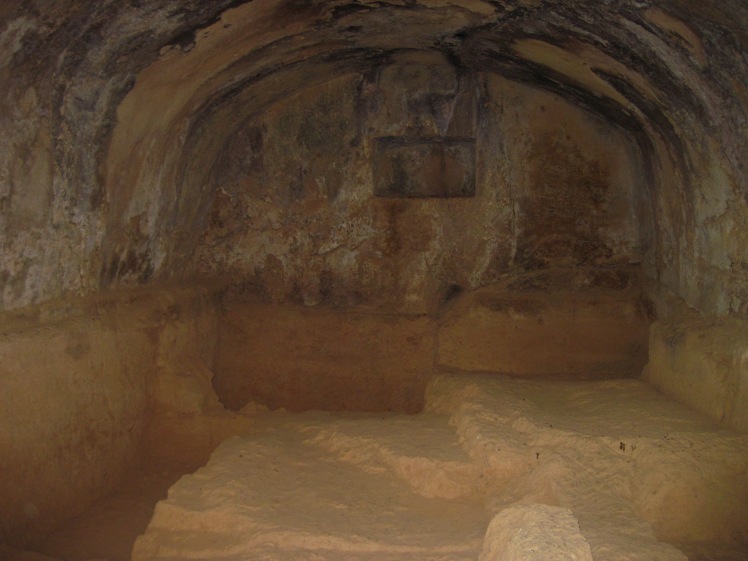
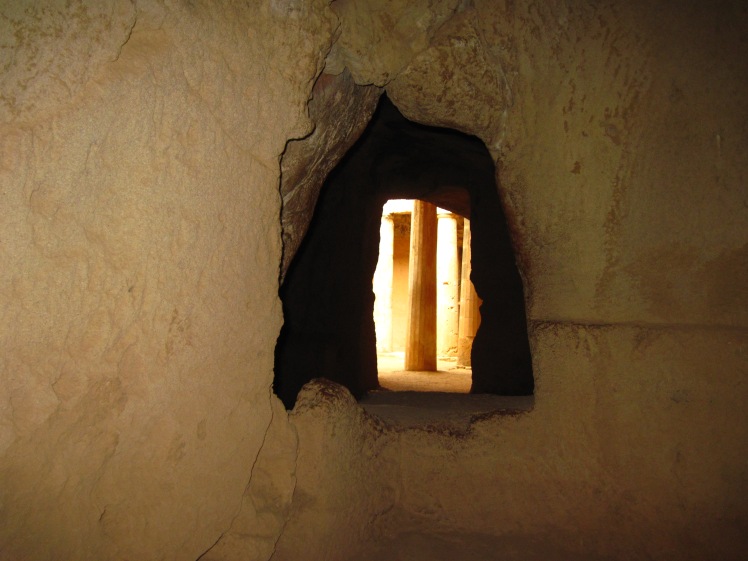
Tomb Four was partially destroyed due to quarrying activities. Much remains, however, with the grave goods and gold jewellery excavated here.
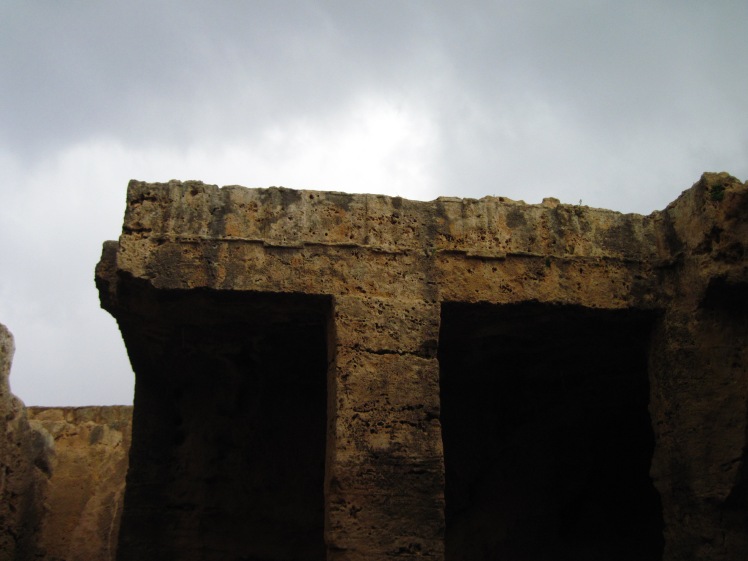
It was at this point we lost track of the intended route and ended up at Tomb Eight. A large complex, it contained a number of graves and burial chambers. The importance of the people buried here was confirmed by the discovery of two headless eagles made of limestone. In terms of architecture, there are influences from the Macedonian region and Egypt. The burials here are dated to the Hellenistic and Roman period.
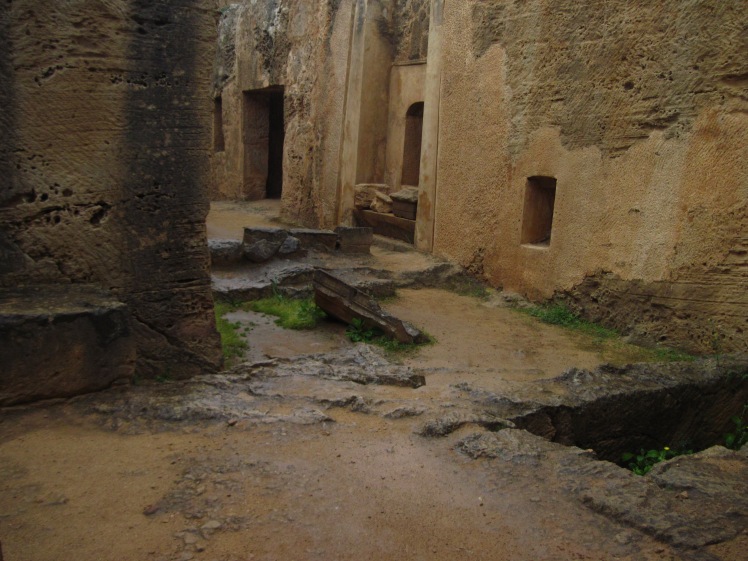

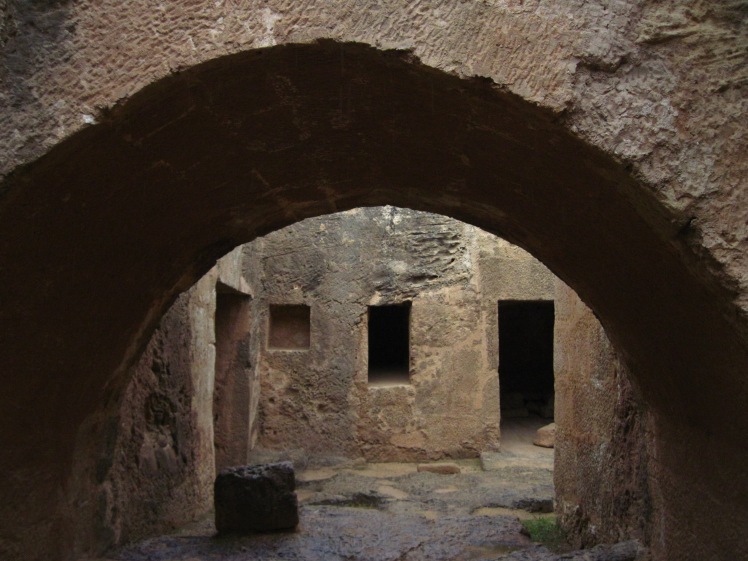
Tomb Six, the last of the tombs we saw, features a few wall painting, graves, and a table for offerings.
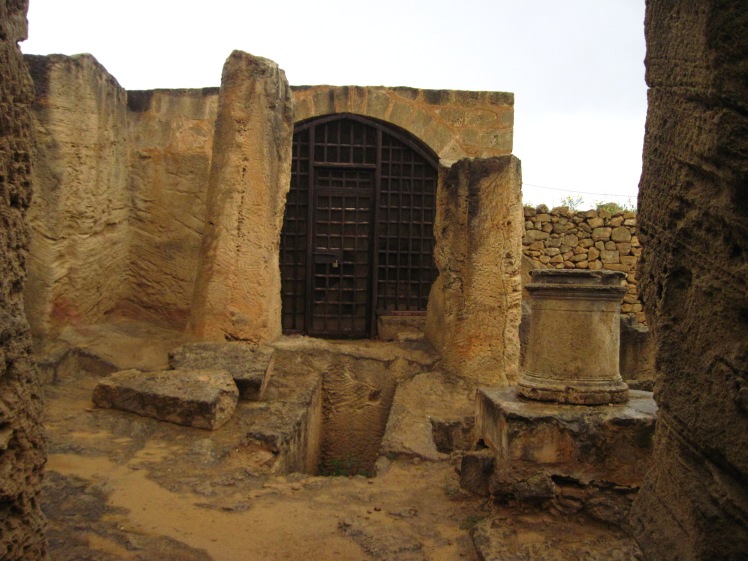
By this point, we felt we had seen enough of the site to get an understanding; after a while the tombs began to seem the same. As soon as we left, however, it of course stopped raining. We decided, therefore, to visit another site in Paphos: Agia Kyriaki Chrysopolitissa. The site began with St. Paul and has had various additions over various time periods since then. It is still a working church today, which we realized when we stumbled upon a funeral procession leaving the building.
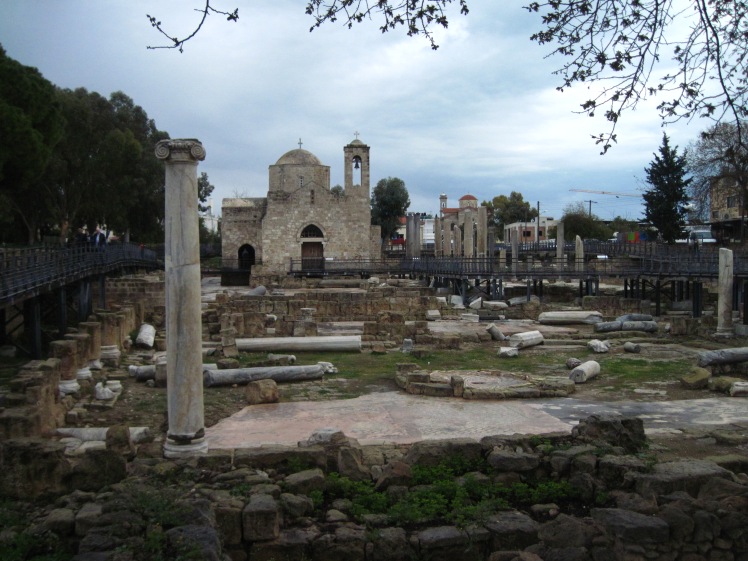
The atrium, a courtyard surrounded by marble columns, dates from the fourth-seventh century AD. The floors are covered with geometric mosaics.
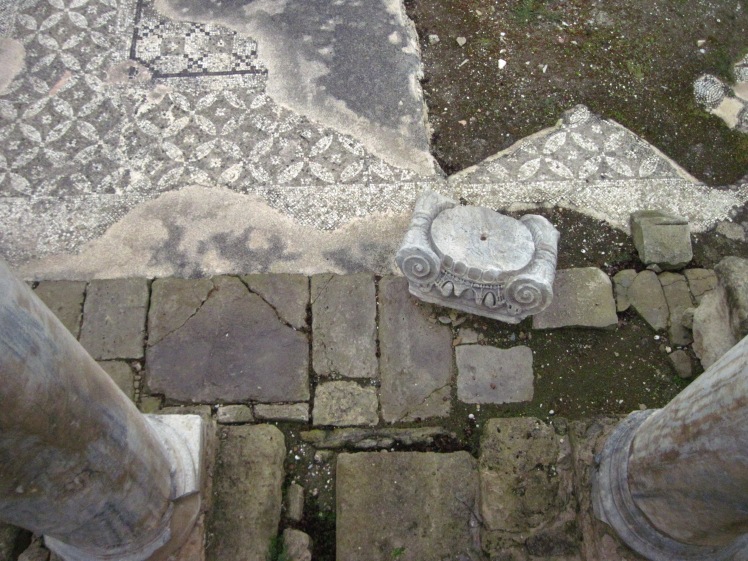
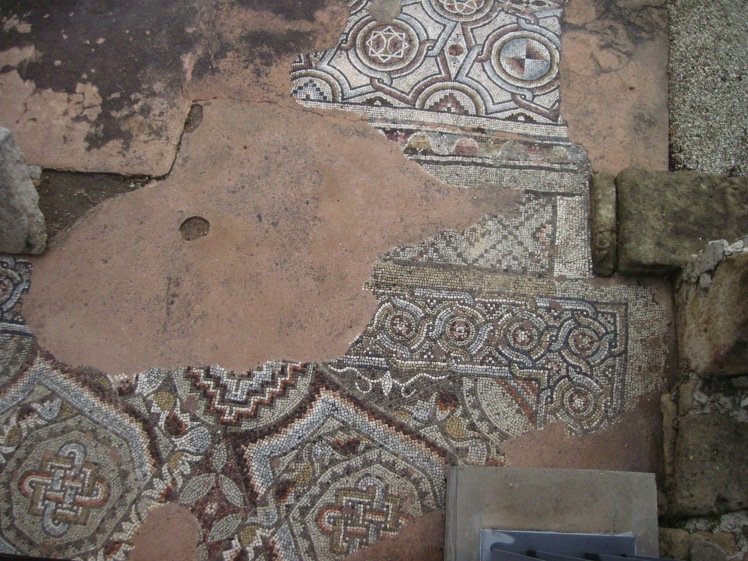
The next architectural phase was the construction of the colonnades in the sixth century. On some of the columns are invocations to Allah in Arabic, mentioning the deceased soldiers of Arab raids. These inscriptions date back to the eighth century when an Arab garrison was established in Paphos after two invasions in the mid-seventh century.
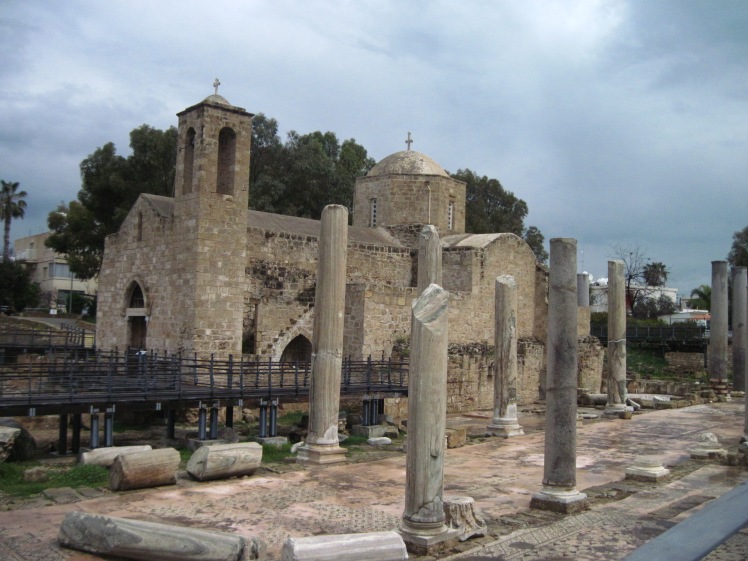
At the back of the site was the first architectural phase from the end of the fourth century. More mosaics were located here.
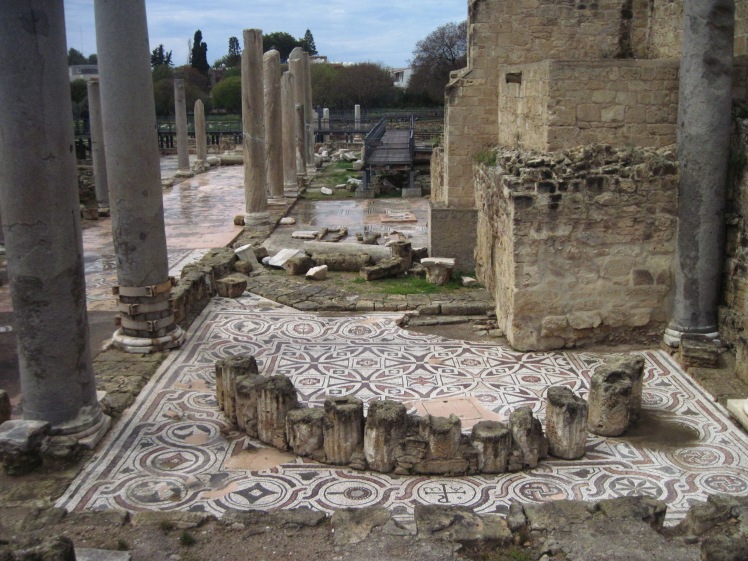
The inside of the church, still in use today, featured simple chairs in contrast to the golden Greek Orthodox icons. The church also hosts services for a number of other faiths including Roman Catholic.

Also located at the site, in fact the item which gave it its original name, is St. Paul’s Pillar. According to local tradition, the people from Paphos tied St. Paul to this pillar and whipped him 39 times. Next to the pillar is another interesting piece of history: a plaque commemorating the death of Eric Ejegod, King of Denmark who died suddenly on his way to the Holy Land.
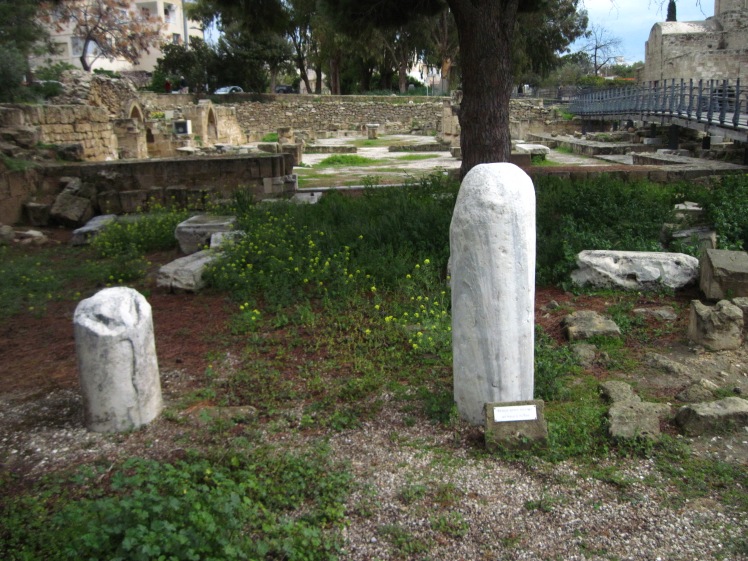
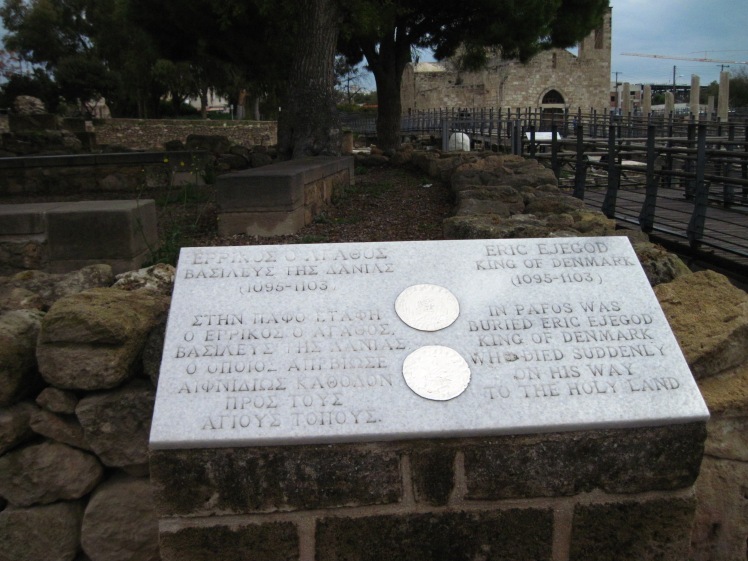
The last part of this complex, located a few feet away, were the medieval baths that were modified in the Ottoman period. The complex consisted of a series of cold, warm, and hot rooms through which bathers would pass consecutively.
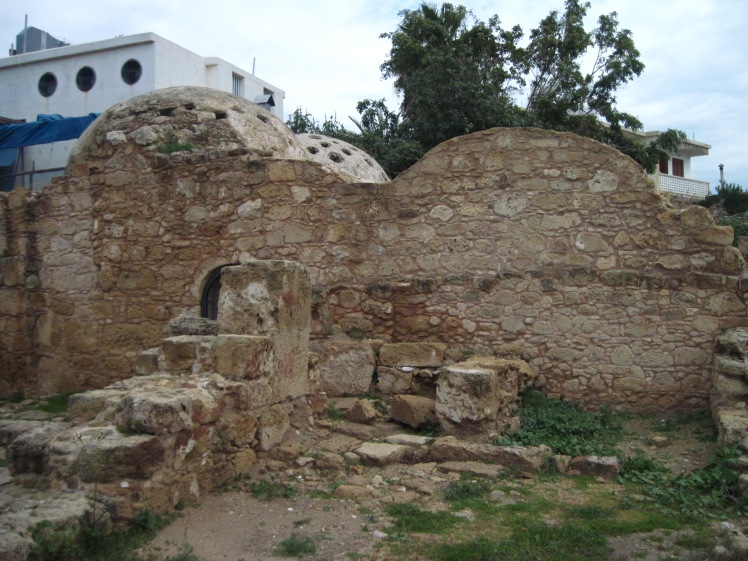
Every time I read your blog entries from Cyprus, I’m overwhelmed by the age of the sites you visited. Stone certainly stands the test of time as a building material. It’s not so great in places where there are earthquakes, but maybe Cyprus doesn’t have much seismic activity, or maybe these tombs are protected by the gods the ancient people believed in. The Ottoman baths – a time-honored tradition. I bet they didn’t have “spouts” that periodically dumped on the bathers, but then again…one never knows, do one?*
*attributed to Fats Waller
LikeLiked by 1 person